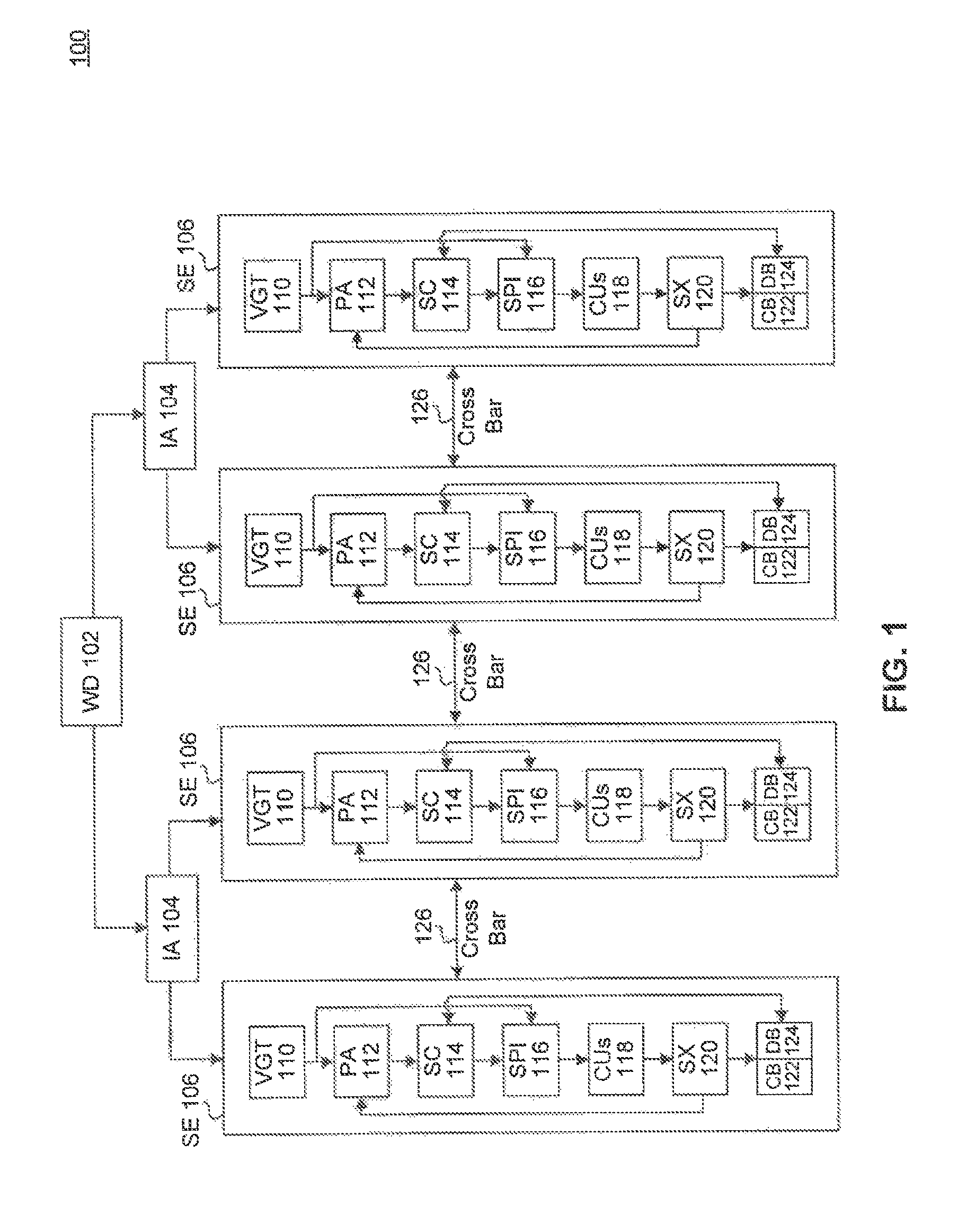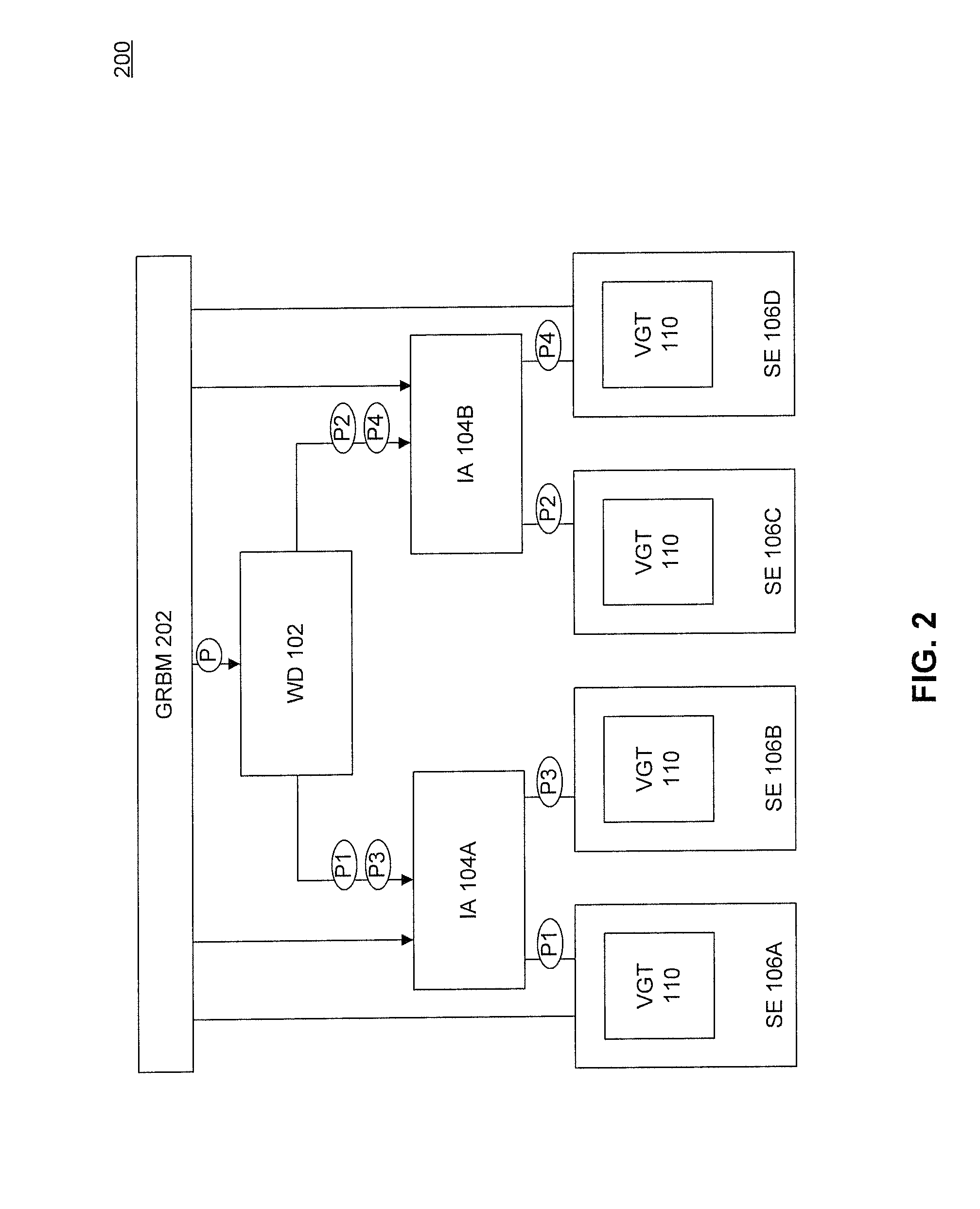Work distribution for higher primitive rates
a work distribution and primitive rate technology, applied in image memory management, instruments, architectures with multiple processing units, etc., can solve problems such as system performance reduction and inefficient processing of primitives, and achieve the effect of efficient rendering of images
- Summary
- Abstract
- Description
- Claims
- Application Information
AI Technical Summary
Benefits of technology
Problems solved by technology
Method used
Image
Examples
Embodiment Construction
[0007]Therefore, what is needed are scalable systems and methods where primitives can be distributed to multiple shader engines for parallel processing and efficient rendering of an image on a display screen.
[0008]A system, method and a computer program product are provided for distributing prim groups (i.e., groups of primitives) for parallel processing in a single clock cycle. A work distributor divides a draw call for primitive processing into a plurality of prim groups according to a prim group size. The work distributor then distributes the plurality of prim groups to a plurality of shader engines for parallel processing of the plurality of prim groups during a clock cycle. The size of a prim group and a number of prim groups are scaled to the plurality of shader engines.
[0009]Further features and advantages of the invention, as well as the structure and operation of various embodiments of the invention, are described in detail below with reference to the accompanying drawings....
PUM
 Login to View More
Login to View More Abstract
Description
Claims
Application Information
 Login to View More
Login to View More - R&D
- Intellectual Property
- Life Sciences
- Materials
- Tech Scout
- Unparalleled Data Quality
- Higher Quality Content
- 60% Fewer Hallucinations
Browse by: Latest US Patents, China's latest patents, Technical Efficacy Thesaurus, Application Domain, Technology Topic, Popular Technical Reports.
© 2025 PatSnap. All rights reserved.Legal|Privacy policy|Modern Slavery Act Transparency Statement|Sitemap|About US| Contact US: help@patsnap.com



